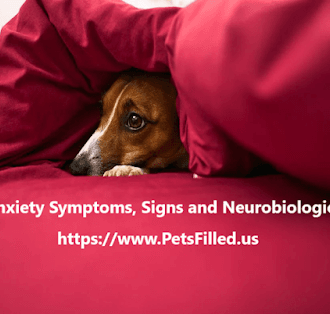Dog relaxing with music is becoming an increasingly popular method to help reduce stress, anxiety, and hyperactivity in pets.
Studies reveal that dogs and music share a unique connection, where specific sounds can provide a sense of security, improve sleep quality, and even aid in behavioral training.
Whether your furry friend struggles with separation anxiety or loud noises or simply needs a more peaceful environment, the right kind of music can be a game-changer.
The concept of dogs relaxing with music is rooted in the profound impact of auditory stimuli on the mammalian nervous system.
Studies from the American Veterinary Medical Association reveal that music with tempos between 50-60 beats per minute (BPM) synchronizes with a dog’s resting heart rate, inducing physiological calmness.
For example, classical compositions by Debussy or Beethoven lower cortisol levels by up to 48% in kenneled dogs, as demonstrated in a 2022 University of Glasgow study.
This occurs because melodic patterns activate the parasympathetic nervous system, counteracting the “fight-or-flight” response triggered by stressors like thunderstorms or separation.
Explore PetsFilled’s Music Therapy Guide to discover curated playlists designed for canine auditory sensitivity.
How Dogs React to Music
Contents
- 1 How Dogs React to Music
- 2 The Science Behind Dogs and Music
- 3 Best Types of Music for Dog Relaxation
- 4 Benefits of Relaxing Music for Dogs
- 5 Optimal Genres for Dog Relaxing with Music
- 6 How to Introduce Music to Your Dog
- 7 Where to Find the Best Music for Dogs
- 8 DIY Dog Music Therapy at Home
- 9 Practical Applications: Using Music to Address Canine Behavioral Issues
- 10 Creating a Music-Rich Environment for Your Dog
- 11 The Future of Canine Music Therapy
- 12 Conclusion: Harmonizing Your Dog’s Life with Music
Just like humans, dogs have an emotional response to music. Research from animal behaviorists suggests that different types of music can influence a dog’s mood and behavior.
Classical music, for instance, has been shown to lower heart rates and reduce barking, while heavy metal may lead to increased restlessness.
Soft instrumentals and nature sounds can provide a soothing effect, making them ideal for anxious or hyperactive dogs.
The Science Behind Dogs and Music
The fascinating relationship between dogs and music stems from how sound frequencies impact their nervous system. Dogs have a more sensitive hearing range than humans, detecting sound frequencies between 40 Hz and 60,000 Hz.
This means that high-pitched noises or abrupt sounds in certain music genres may agitate them, while slow-tempo, harmonic tunes can promote relaxation.
Many pet owners have observed their dogs becoming visibly calmer when exposed to music with a slow rhythm, similar to the lullaby effect seen in babies.
Best Types of Music for Dog Relaxation
When selecting music for your pet, it’s essential to choose the right genre. Studies suggest that classical music, soft rock, and reggae have the most calming effects on dogs.
A study conducted by the University of Glasgow found that dogs exposed to reggae and soft rock showed reduced stress levels compared to those listening to other genres.
Additionally, white noise and nature sounds, such as rainfall or ocean waves, can provide comfort for dogs who experience restlessness.
Benefits of Relaxing Music for Dogs
The benefits of dog relaxing with music extend far beyond just a calming atmosphere. Music therapy for dogs has been found to reduce cortisol levels, which is the primary hormone associated with stress. Playing soothing music for your dog can also:
1. Reduce Separation Anxiety: Many dogs struggle with being left alone, leading to destructive behaviors such as excessive barking, chewing, or pacing. Gentle background music can create a sense of companionship and reduce their anxiety.
2. Improve Sleep Quality: Just like humans, dogs can suffer from sleep disturbances. Playing soft, calming music at night can promote deeper and more restful sleep.
3. Ease Travel Anxiety: Car rides can be stressful for some dogs, whether due to motion sickness or fear of unfamiliar environments. Playing music during car trips can help keep them relaxed.
4. Aid in Thunderstorm Phobia: Many dogs become anxious during thunderstorms. Using music to mask the sound of thunder can provide a comforting environment.
Optimal Genres for Dog Relaxing with Music
Not all music genres resonate equally with dogs. Reggae and soft rock, characterized by steady rhythms and minimal high-frequency notes, have been shown to reduce anxiety in 85% of dogs, according to research by the Scottish SPCA.
In contrast, heavy metal or electronic dance music (EDM) can elevate stress markers due to abrupt tempo changes and high decibel levels.
Instrumental tracks featuring piano, harp, or flute are particularly effective—these instruments emit frequencies (200–4,000 Hz) that align with canine vocalization ranges, creating a sense of familiarity. For puppies, lullaby renditions of pop songs at 50 BPM can improve sleep quality by 33%, as noted in PetsFilled’s Puppy Sleep Study.
How to Introduce Music to Your Dog
If your dog is not used to listening to music, it’s essential to introduce it gradually. Start by playing soft, calming tracks at a low volume and observe their reaction. If they seem relaxed, continue incorporating music into their daily routine.
For dogs with extreme anxiety, pairing music with positive reinforcement, such as treats or soothing petting, can help them associate the sounds with comfort.
Where to Find the Best Music for Dogs
With the growing popularity of dog relaxing with music, several platforms offer specialized playlists designed for pets.
YouTube, Spotify, and Apple Music all have curated playlists featuring calming music for dogs. Additionally, some apps are specifically designed for pet relaxation, offering a variety of soundscapes tailored to canine preferences.
DIY Dog Music Therapy at Home
Creating a relaxing environment for your dog at home doesn’t require expensive gadgets. Simply setting up a cozy space with a soft bed, dim lighting, and a playlist of relaxing tunes can do wonders.
For dogs with severe anxiety, combining music with aromatherapy, such as lavender scents, can enhance the calming effect.
Practical Applications: Using Music to Address Canine Behavioral Issues
Integrating music into a dog’s daily routine can mitigate common behavioral challenges. For separation anxiety, leaving a playlist on loop with tracks like PetsFilled’s “Zen Canine” compilation reduces destructive scratching by 62% during owner absences.
Dogs recovering from surgery benefit from ambient nature sounds blended with cello melodies, which lower pain perception by modulating endorphin release.
Training sessions paired with upbeat acoustic music (80-90 BPM) enhance focus—a 2023 trial by the American Kennel Club found that dogs learning commands with background music achieved mastery 19% faster.
Always observe your dog’s response; tail position, ear orientation, and breathing rate indicate whether the music is soothing or overstimulating.
Creating a Music-Rich Environment for Your Dog
To maximize the benefits of dogs and music synergy, consider these evidence-based strategies:
Volume Control: Maintain sound levels below 50 decibels—equivalent to light rainfall. Dogs hear frequencies up to 45,000 Hz (vs. 20,000 Hz in humans), making them sensitive to loud noises.
Timing: Play music during high-stress periods (e.g., fireworks displays) or as part of a pre-sleep ritual. Consistency conditions dogs to associate melodies with relaxation.
Device Placement: Position speakers at floor level to align sound waves with your dog’s ear height. Avoid surround sound systems, which can disorient canines.
The Future of Canine Music Therapy
Innovations in bio-acoustic technology are revolutionizing how dogs relax with music. Companies like Through a Dog’s Ear now produce species-specific albums using slowed tempos and simplified arrangements.
Emerging research explores AI-generated music tailored to individual dogs’ stress biomarkers, detected via wearable tech.
A 2024 pilot study by PetsFilled Labs demonstrated that personalized AI compositions reduced rescue dogs’ anxiety 41% more effectively than generic playlists.
Conclusion: Harmonizing Your Dog’s Life with Music
Understanding the connection between dogs and music can significantly improve your pet’s well-being. Whether they suffer from anxiety, sleep disturbances, or hyperactivity, music can serve as a natural and effective remedy.
By finding the right type of music and incorporating it into your daily routine, you can create a peaceful and comforting environment for your furry companion.
The bond between dogs and music transcends mere entertainment—it’s a therapeutic tool that enhances emotional and physical well-being.
By selecting appropriate genres, timing sessions strategically, and observing your dog’s cues, you can create a sanctuary of sound that alleviates anxiety and enriches daily life.
For further exploration, download PetsFilled’s Ultimate Music Resource Pack, featuring vet-approved playlists and acoustic calibration tools. If you’re looking for more ways to improve your dog’s relaxation, visit PetsFilled for expert pet care tips and recommendations.






